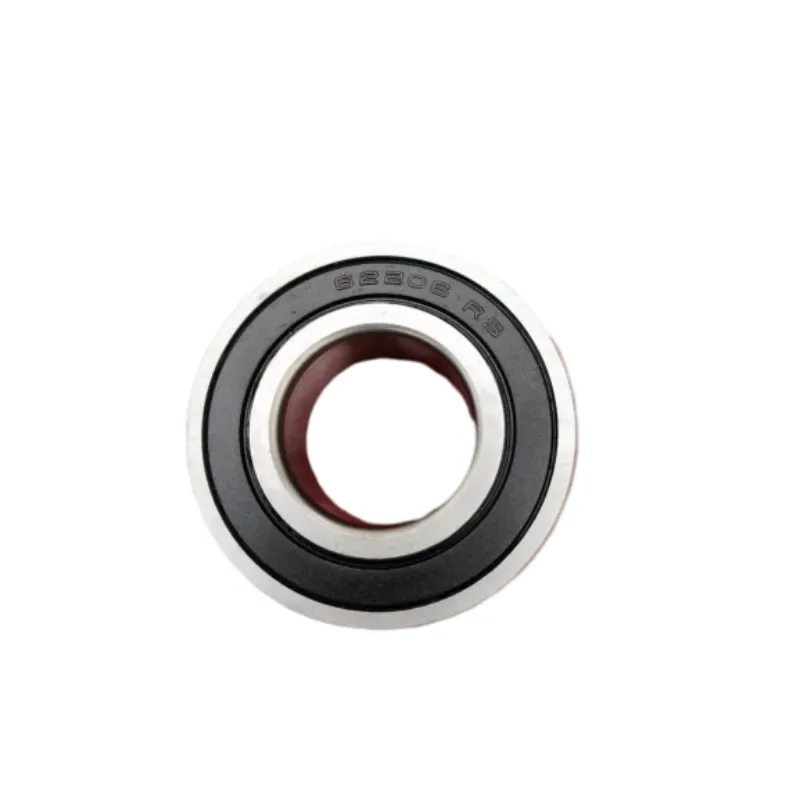
Oct . 13, 2025 13:05 Back to list
Deep Groove Ball Bearing | High Precision, Low Noise, Sizes
Deep Groove Ball Bearings: Insider Notes, Specs, and Real-World Tips
If you work around rotating equipment long enough, you start to appreciate the humble deep groove ball bearing. It’s everywhere—motors, fans, gearboxes, even skate wheels. And yes, it still evolves. In fact, the latest buzz from OEM buyers I speak with: quieter operation, cleaner steels, and zero-defect noise testing are now table stakes.

What’s special about the deep groove ball bearing design?
The raceways are, well, deep—allowing robust radial load plus some axial load. Increase the radial clearance and, surprisingly, it can shoulder heavier axial loads, sometimes replacing a high-speed angular contact set. Many customers say that’s a budget saver when they’re rationalizing SKUs.
Industry trends I’m seeing
- Cleaner bearing steels and better heat treatment → longer L10 life.
- Noise grades (V1–V3) and vibration per ISO methods are being audited more rigorously.
- EV motors and inverter-duty drives push for higher speeds, better cages, and premium greases.
- Traceability (QR-coded rings) and IATF 16949 quality frameworks, even for non-auto orders.

Materials, process, and testing (how it’s actually made)
Typical materials: GCr15 / 100Cr6 (AISI 52100) rings and balls; 440C for corrosive duty. Cages in steel, PA66, or brass depending on speed and temperature. Process flow: wire rod → forging/turning → heat treat (controlled quench/temper) → grinding → superfinishing (raceway Ra ≈ 0.02–0.04 μm) → assembly → grease fill → sealing (ZZ/2RS) → 100% noise and vibration screening. Testing against ISO tolerances (e.g., P0–P5), vibration per ISO methods, and routine metallography. Service life? For a 6205 running moderate loads and clean lubrication, 30,000–50,000 h isn’t unusual—real-world use may vary.
Product specifications (typical)
| Bore range | 3–200 mm (common series: 60xx/62xx/63xx) |
| Tolerances | ISO P0, P6, P5 (ABEC 1/3/5 ≈) |
| Clearance | C2, CN, C3, C4 (choose based on fit/temperature) |
| Seals/Shields | Open, ZZ (shields), 2RS (contact seals) |
| Grease | NLGI 2 lithium/polyurea; -30 to 150°C ≈ |
| Speed rating | Up to ≈ 30,000 rpm (small sizes, open) |
| Dynamic load (example 6205) | C ≈ 14 kN; L10 life per ISO 281 |
| Vibration/noise | Grades V1–V3; measured per ISO methods |
Applications and feedback
Motors, HVAC blowers, power tools, conveyors, pump ends, and small gearboxes. In food or washdown zones, specify stainless, contact seals, and food-grade grease. One HVAC buyer told me, “the new deep groove ball bearing runs noticeably quieter after warm-up”—not a lab metric, but field techs notice.

Vendor comparison (what to look for)
| Criteria | ARY Bearing | Typical Trader |
|---|---|---|
| Origin | XIHUAN ROAD HEXI TOWN LINXI COUNTY HEBEI PROVINCE CHINA | Mixed/undisclosed |
| Certifications | ISO 9001; IATF 16949 (on request) | Varies |
| QC & testing | 100% noise/vibration check; traceability | Spot checks |
| Customization | Clearance, grease, seals, cages, P5 | Limited |
| Lead time | 2–5 weeks ≈ | Uncertain |
Customization playbook
For a high-speed deep groove ball bearing: choose P5 tolerance, PA66 or phenolic cage, low-torque seals or shields, and polyurea grease. For dirty duty: C3 clearance, full-contact 2RS seals, and a robust lithium complex grease. Ask for PPAP if you sell into automotive.
Mini case studies
- HVAC OEM switched to V3 noise-grade deep groove ball bearing with polyurea grease; field complaints dropped and measured sound decreased ≈1.5 dB at 1 m.
- Food line conveyors upgraded to 440C with H1 grease; service life extended ≈3× between washdowns.
Standards and references
Design and validation typically reference ISO 281 (life), ISO 492 (tolerances), ISO 15242 (vibration), and automotive QMS via IATF 16949. For steels, check ISO 683 specifications.
- ISO 281 — Rolling bearings: Dynamic load ratings and rating life. https://www.iso.org
- ISO 492 — Rolling bearings: Radial bearings — Tolerances. https://www.iso.org
- ISO 15242 — Rolling bearings: Measuring methods for vibration. https://www.iso.org
- IATF 16949 — Automotive Quality Management. https://www.iatfglobaloversight.org
Latest news
-
Everything You Need to Know About 6001 C3 Bearing – Specs, Uses, and Advantages
NewsNov.22,2025
-
6208 zz Bearing – Key Technical Insights, Applications & Vendor Comparison
NewsNov.22,2025
-
Everything You Need to Know About the 61906 Bearing | Features, Applications & Vendors
NewsNov.22,2025
-
Comprehensive Guide to 6201z 12.7 Bearing – Specs, Uses & Vendors | Ary Bearing
NewsNov.21,2025
-
Understanding the 6205 Bearing Size: Specs, Uses, and Global Impact
NewsNov.21,2025
-
Comprehensive Guide to 6211 Bearing Dimensions for Global Industrial Use
NewsNov.20,2025
